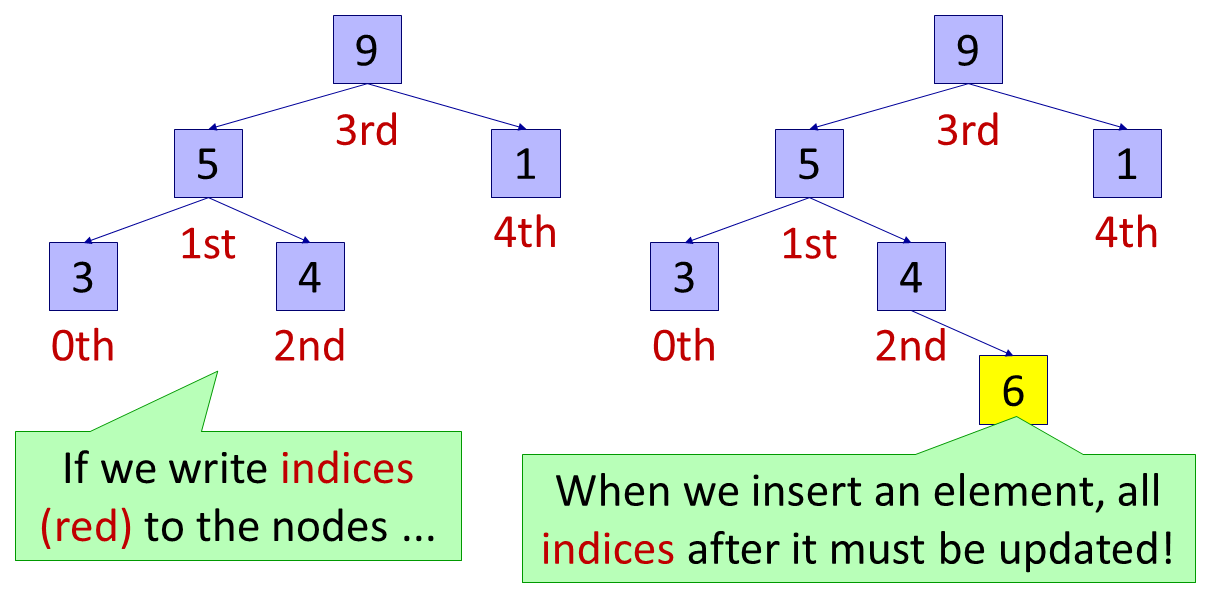Outline
LTOList (Logarithmic-Time-Operation List) is a linear list structure using a binary search tree. This is an implementation of LTOList in C++.
The variable-length array (VLA, std::vector in C++) and the linked list (LL, std::list in C++) are famous linear list structures, whose computational costs are: (n: the size of the list)
- VLA: O(1) time (worst-case) for a random access, O(n) time (worst-case) for an insertion and a deletion,
- LL: O(n) time (worst-case) for a random access, O(1) time (worst-case) for an insertion and a deletion.
The question is that how we achieve the middle; LTOList achieves O(log n) time for all of a random access, an insertion and a deletion in the worst case!
An LTOList is implemented with a binary search tree (BST) where the number of children is kept for each tree node. In the library a "red-black tree" is implemented from scratch.
Tell me if you know ...
Such a data structure seems to be known to many others, but I could not find a specific name.
- Example 1: https://kaiseh.hatenadiary.org/entry/20071231/1199122020; in Japanese, implemented by a "skip list" instead of BST
- Example 2: https://logfiles.hatenablog.com/entry/2016/12/02/103200; in Japanese, implemented by a "Treap" (BST with randomness)
If you know a specific name, please tell me.
Caveats
Since O(log n) time is achieved by tree operations (namely, pointer operations), in reality insertions and deletions may be slower than those for VLA that theoretically requires O(n) time but much more memory-efficient.
The implementation of LTOList is based on BST, but more memory-consuming than ordinary BST that orders elements automatically: ordinary BST requires three pointers for each list element, while LTOList requires five.
Answers to anticipated questions
- Why a "red-black tree" is implemented from scratch? Can it be implemented by C++-standard BST-based structures, for example,
std::map?
Implementation details
How do we achieve O(log n) time for all of a random access, an insertion and a deletion in the worst case?
First suppose that, for each node in BST, we write the index of the element. However, when we insert or delete an element, the updates of the indices require O(n) time, as an insertion or deletion for VLA requires.
To avoid this situation, for each node in BST, we write the numbers of left and right children. Then, when we insert or delete an element, the updates of the numbers require only O(log n) time; it is sufficient to update the numbers for only the nodes from the inserted or deleted nodes to the root node.


Usage
LTOList has similar APIs to those of std::vector; almost all APIs are implemented except for memory allocations (e.g., std::vector<T>::reserve).
A large difference from std::vector is that, since LTOList is implemented as a BST, given an iterator we can insert another element either before or after the iterator.
Examples
You can build examples by the following command (example for LTOList_example_poppush.cpp, using GCC):
You can also create a Makefile that builds examples by CMake: if you have CMake, the following command will generate a Makefile for all examples:
Document
The document can be generated with Doxygen. (Not all APIs are documented yet.)
The generated document is also available at https://hhiro.net/ltolist/doxygen/ .
Author
H.Hiro
- e-mail: main@hhiro.net
- Website: https://hhiro.net/
- GitHub: https://github.com/maraigue
Published under the MIT license. See LICENSE.txt for details.
 1.8.16
1.8.16